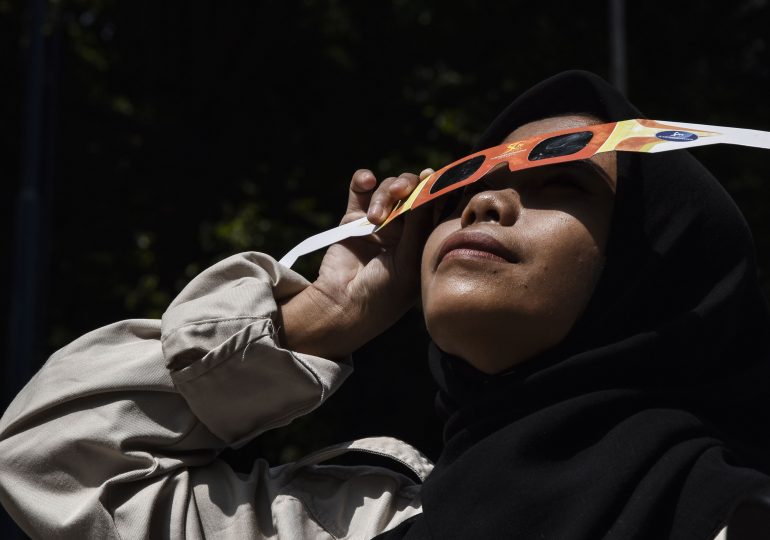There’s only one eclipse to see on April 8: a total solar eclipse that will inscribe a path across 15 states in the U.S. On Nov. 14, 2031, however, people in the right part of the world will be treated to what will amount to two eclipses, when the sun and the moon engage in the sky dance known as a hybrid eclipse. So what is a hybrid eclipse, and what makes it special?
[time-brightcove not-tgx=”true”]
The appearance of any given eclipse is determined in large measure by the position of the moon relative to the Earth. The moon’s orbit around our planet is not perfectly round, but instead elliptical, ranging from an apogee—meaning when it’s farthest from the Earth—of about 405,000 km (252,000 mi.), to a perigee—the point at which it’s closest to the Earth—of 360,000 km (224,000 mi). The nearer to perigee the moon is, the bigger it appears to us; the nearer to apogee, the smaller it appears.
Read More: How to See the First Solar Eclipse of 2024
A total eclipse occurs during those perigee passes, when the apparent size of the moon is just right to block out the sun. When the moon is farther away, and thus appears smaller, much of the light of the sun can leak out around it, producing the less-sensational phenomenon known as an annular eclipse.
Typically we only get one or the other, but a hybrid eclipse is different, occurring when the moon’s distance is balanced on something of a knife-edge between apogee and perigee—not too close and not too far. In those cases, the kind of eclipse you see is determined by where you’re standing on the Earth. Stand near the equator, at Earth’s bulging midline, and you are essentially standing a tiny bit farther out into space—and a tiny bit closer to the moon. Stand at higher or lower latitudes, where the Earth curves back, and you are standing farther away. In those latter cases, the moon appears smaller, and the eclipse you witness will be annular; in the former cases, the moon looks bigger and the eclipse appears total.
Read More: The Eclipse Could Bring $1.5 Billion Into States on the Path of Totality
The 2031 eclipse will pass almost entirely over water, with the path of totality inscribed in the eastern and southern Pacific Ocean and the greatest totality lasting just one minute and nine seconds—compared to up to four and a half minutes for the April 8, 2024 eclipse. The greatest annularity in the 2031 eclipse will occur as the moon’s shadow crosses the thin ribbon of Panama. The hybrid eclipse will be lovely; the one coming this month will be nothing short of stunning.
Leave a comment








